Part 1: Clos Normand
Article by Mies Šmes
Who could be more fair to judge Claude Monet’s oeuvre than the French artist himself? Acknowledged by the father of Impressionism as his ‘most beautiful masterpiece’, the garden at Giverny —to which he dedicated half his life— was not only a living canvas in which he used flowers instead of paints, but also the most important subject of his late years’ paintings.

Monet, Claude. The artist’s garden at Vétheuil. 1880
His previous sunflower garden already evidenced the Japanese influence in the use of white and blue vases.
When Monet saw Giverny (a small village in northern France) for the first time from his train window, he fell in love so deeply that he was compelled to rent a house in this French commune, where he moved with his large family -his two sons, Jean and Michel, his future second wife, Alice Hoschedé and her six children- in 1883. The property was beside the road; the large path that began at the gate and led to the house was originally lined with cypresses and spruces, which Monet had cut down except for two to please Alice, putting a metallic arch and carpeting the ground with nasturtiums and roses.
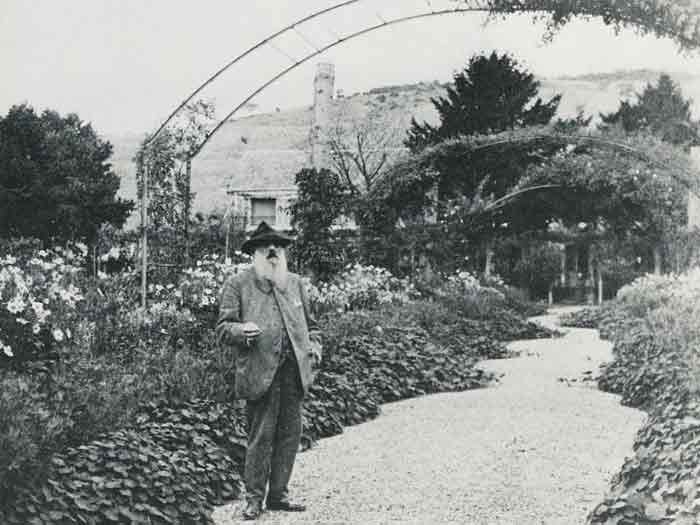
Monet standing on the path to the house, 1923
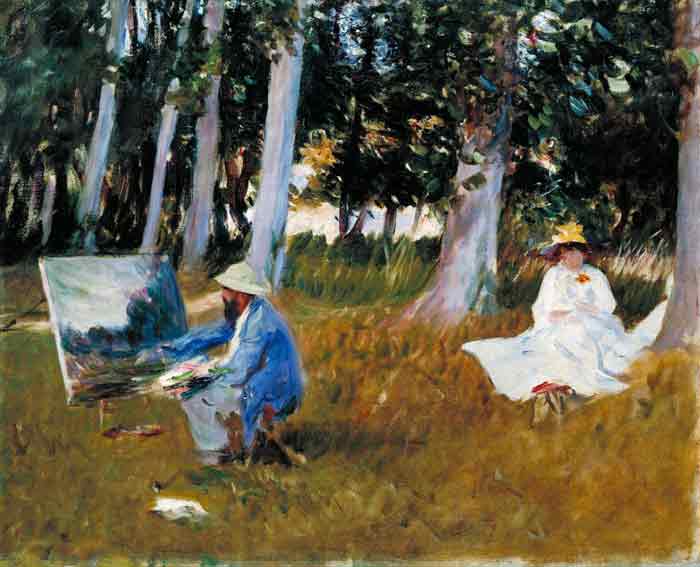
Singer Sargent, John. Claude Monet Painting by the Edge of a Wood, 1885
The American painter admired Monet and after visiting him at Giverny, took the habit of painting en plein air (outdoors).
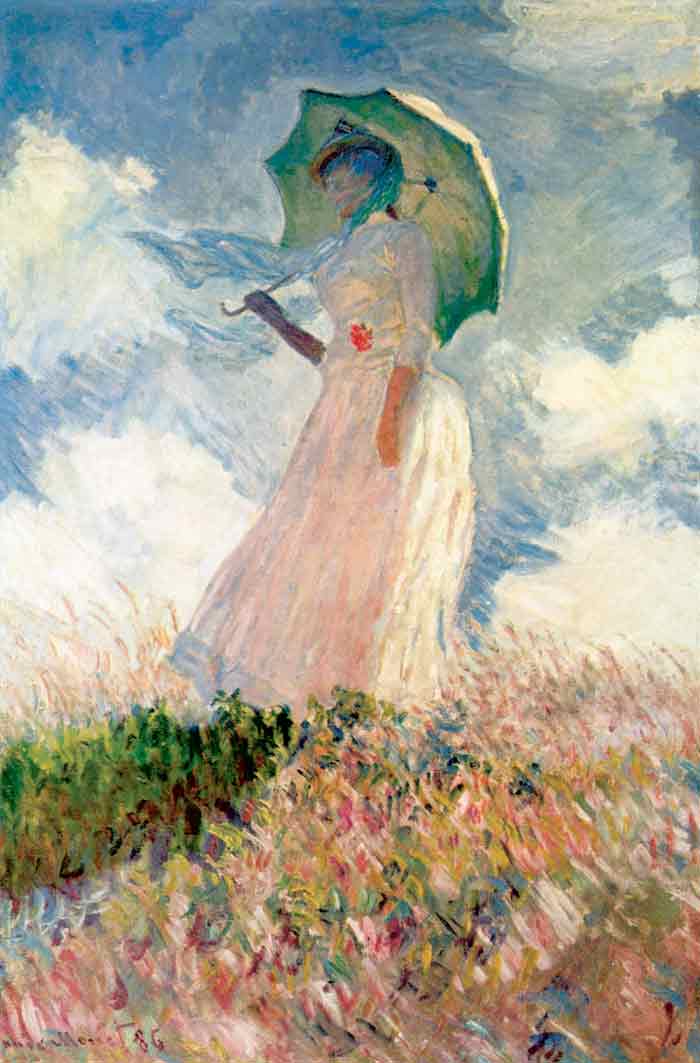
Monet, Claude. Woman with a Parasol, facing left, 1886
Monet’s anthomania (namely his passion for flowers; quoting his own words, “I must have flowers, always, and always”) made him rent a nearby two acre and a half land to move all his vegetables there and have his garden (now known as Clos-Normand) all to his flowers. He replaced the apple tress for Japanese cherries; he planted poppies instead of cabbages and lettuce, and irises and marigolds in replacement of onions. He grew mostly flowering annuals —which had to be replaced every year, but gave colorful blocks of color— and perennials, double-flowered species such as roses and peonies. Nevertheless, the artist preferred single flowers —tulips, anemones— as they allow the sunlight to penetrate through their petals, transforming themselves into tiny color-tinted paper lanterns. As with every Impressionist, the use of light in his paintings was of extreme importance, this is the reason why he avoided dark flowers. In order to combine them, he tested arrangements with cut flowers; common local species were then paired with exotic ones, grouped together mainly by color for a stronger visual impact. By 1890, Monet, who had finally established himself as a well known artist, was able to buy the two acre house and hire two gardeners.

Monet, Claude. Peony Garden, 1887

Monet between his pelargoniums and roses, 1921
Having shared growing tips with fellow Impressionist painter Gustave Caillebotte, he also learned all he could from Flore des Serres et des Jardins de l’Europe (‘Flowers of the Greenhouses and Gardens of Europe’) a journal that had been ran by the owner of the most important European plant nursery of the mid 19th Century, who had sent explorers to remote parts of the world in search for unknown species for cultivation and publication in his magazine, which also served as a catalog. These kind of plants were obviously expensive, nonetheless Monet invested all the money he earned in his garden, and as his passion for botany grew, so did the varieties of exotic plants in his possession. In a short time, his Clos Normand garden would not be enough to satisfy his obsession and Monet would go to extreme lengths in order to recreate the garden of his dreams…
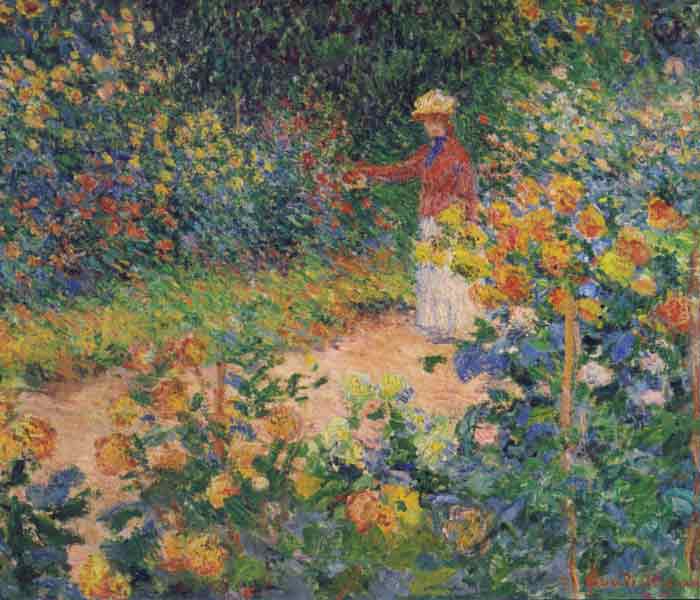
Monet, Claude. In the Garden, 1895
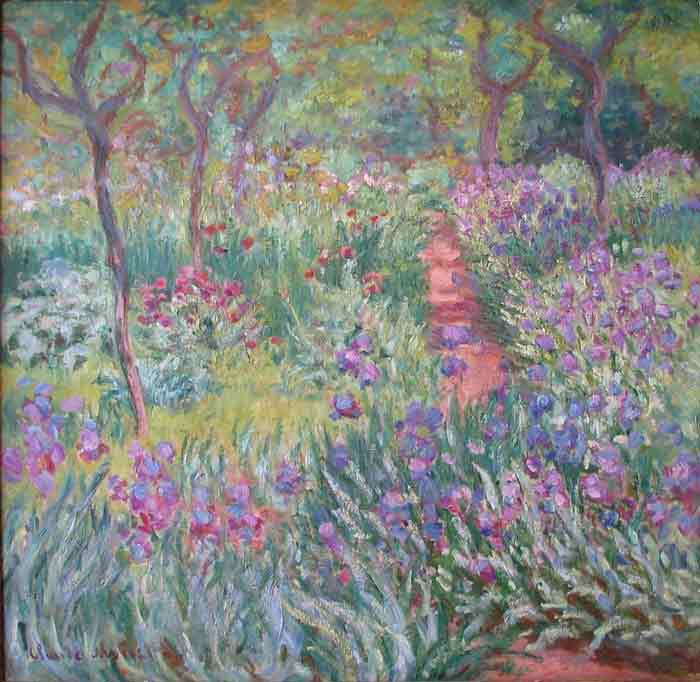
Monet, Claude. The Iris Garden at Giverny, 1900





